7 paintings hiding other works of art: from Malevich's Black Square to Leonardo da Vinci's Mona Lisa
Categories: Art | Exhibition | History | Photo project | World
By Vika https://pictolic.com/article/7-paintings-hiding-other-works-of-art-from-malevichs-black-square-to-leonardo-da-vincis-mona-lisa.htmlHave you ever wondered how famous painters created their main canvases? In a burst of inspiration, did you write everything in a few days, or did you perfect every detail for years? We will never get an exact answer. But we know one thing for sure - many artists (like real creative people) could change the vector of work in one second and move away from the main idea.
Only the final version has come down to us, faced with dozens of edits by its author. But thanks to museum workers and modern technology, we have the opportunity to look into the past and see how the legendary canvases really should have looked.
There are seven paintings in front of you, under the top layer of which completely different images are hidden. And even if you are not strong in art, we assure you that there are works in the selection that everyone knows. Spoiler: the mysterious "Mona Lisa" could not do without.
7 PHOTOS

1. Black Square by Kazimir Malevich
There has always been a lot of controversy and discussion around Malevich's Black Square. Some say that this is a legendary work, while others argue that they can draw the same one sitting in the kitchen.
However, in 2015, employees of the Tretyakov Gallery conducted another study of the painting and found out that two more works were hidden behind the square. And they belong to different areas of the painting. The lowest layer is towards Cubo-Futurism, and the second one is towards Proto-Suprematism.
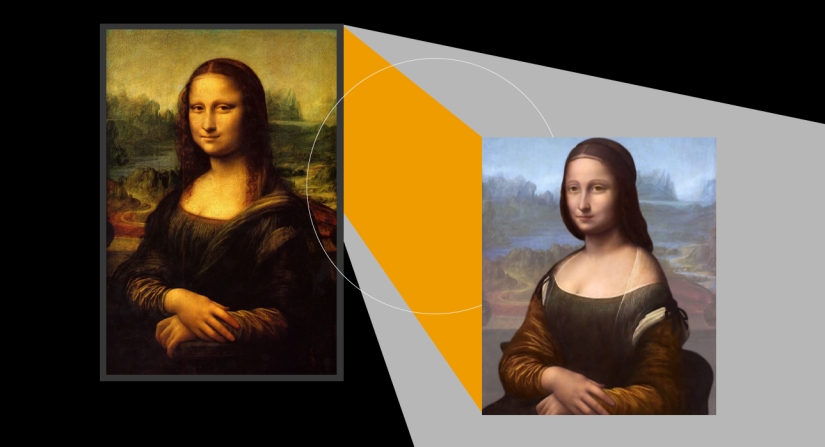
2. "Mona Lisa" by Leonardo da Vinci
Many mysterious stories and legends are connected with this mysterious picture. One of them became known only in 2015 when the French engineer Pascal Cotte analyzed the lower layers of paint in da Vinci's work and concluded that the artist originally painted a completely different woman. And there was no mysterious smile there. Moreover, Kott claimed that the famous portrait had more than two layers, and one of them even resembled the Virgin Mary. By the way, many experts do not agree with this version and believe that the lower layers are different stages of the same work.
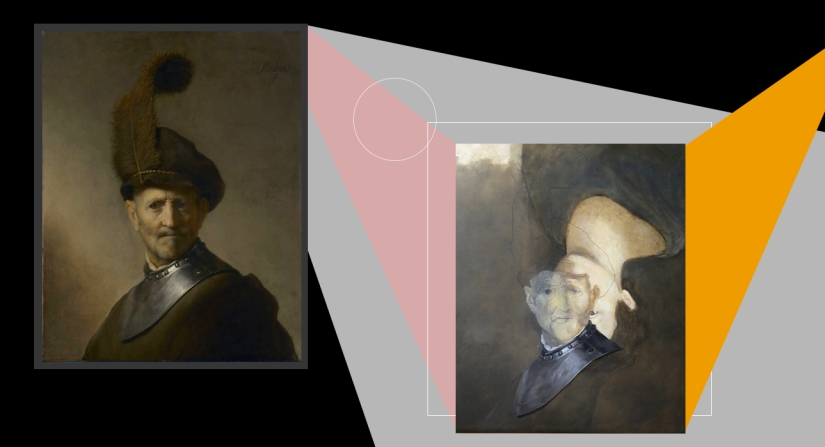
3. "Old Man in Military Suit" by Rembrandt van Rijn
The Dutch artist of the 17th century also sometimes hid paintings under a layer of others. One of these works is "An old man in a military suit." Back in 1968, scientists discovered the second layer of the painting. However, then there was no technology to see the details. It was possible to do this only in 2015. The researchers scanned the centuries-old canvas and found under it a portrait of an unknown young man in a green suit.
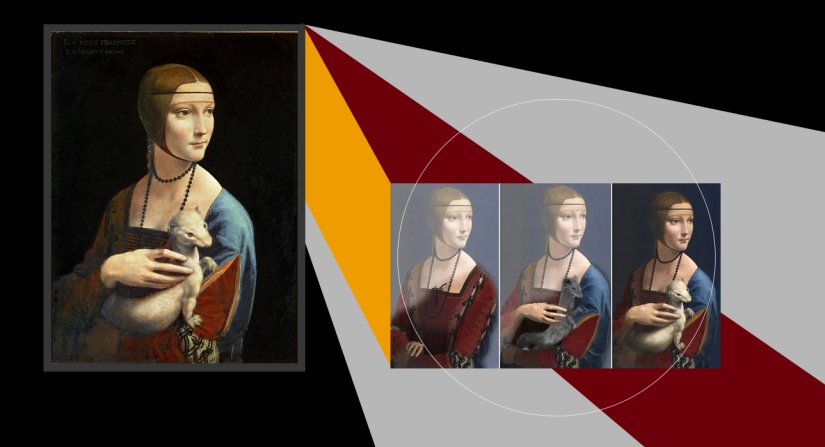
4. "Lady with an Ermine" by Leonardo da Vinci
It turns out that in the original version of the painting by Leonardo da Vinci, there was no most important element - ermine. This was first stated by the same French engineer Pascal Cotte. Why the artist decided to add an animal to the picture is not exactly known, but there are several versions. The first is that the canvas depicts the mistress of the Duke of Milan, Lodovico Sforza, whose emblem was the ermine. According to the second version, the girl was pregnant, and the ermine covered her stomach.
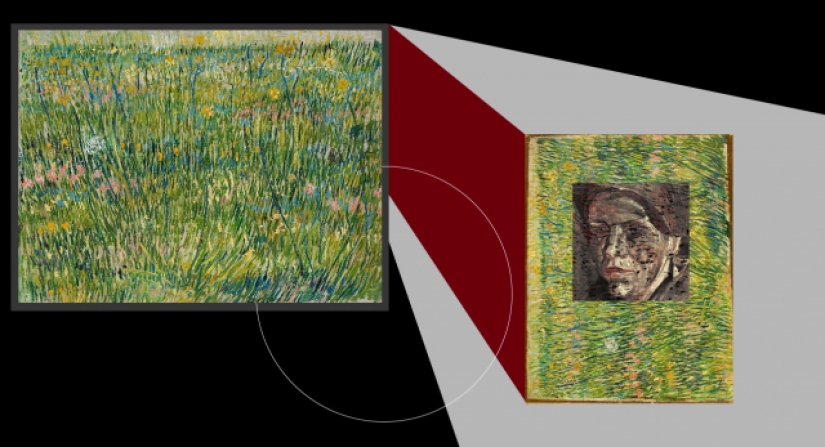
5. Patch of Grass by Vincent van Gogh
In 2008, with the help of technology, scientists from Belgium and the Netherlands managed to find an unknown female portrait under the layer of the painting “Patch of Grass”. By the way, Van Gogh often painted pictures on top of other works. And he did this not at all because he wanted to add something to the already existing canvases, but simply because of the lack of money.
Many experts say that about a third of Van Gogh's works hide other paintings underneath.
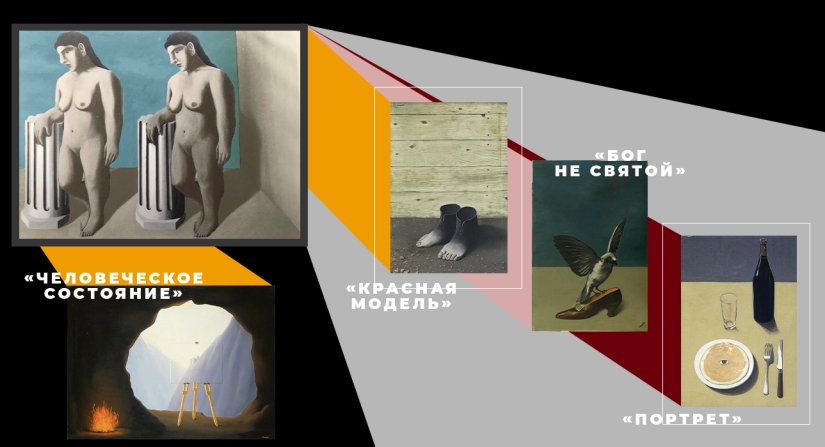
6. "Enchanted Pose" by Rene Magritte
This painting by the famous surrealist was painted in 1927, but after five years it disappeared without a trace. The search continued for almost a hundred years but to no avail. Until 2013, employees of the Museum of Modern Art in New York did not find one fragment of the "Enchanted Pose" under the layer of another painting by Magritte "Portrait". It turned out that in 1932 the artist cut the canvas into four parts and wrote completely different works on them. The second fragment was found under the painting “Red Model”, and in 2016, the third part of “Pose” was found in the gallery of the English city of Norwich. She was hiding in The Human Condition. The search ended only in 2017 when the last fragment was found under the work of Magritte "God is not a saint."
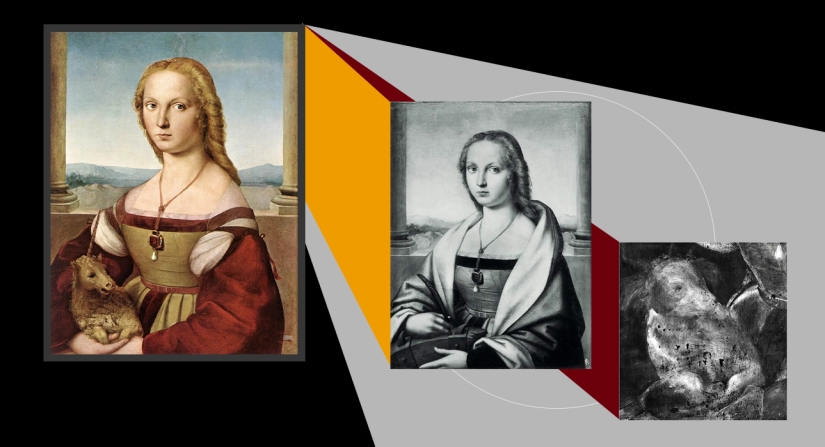
7. "Lady with a Unicorn" by Raphael Santi
The history of the creation of this picture is even more mysterious than all the previous ones put together. According to some reports, the portrait of a lady with a unicorn was painted in 1506. In 1760, he is referred to as "Saint Catherine of Alexandria" by Perugino. However, later it was proved that the author is still Rafael Santi. But the secrets don't end there. Before the first restoration, instead of a unicorn, the painting depicted a martyr's wheel and a palm branch. In 1916, the Italian art historian Giulio Cantalamessa established that these attributes were added later. And only after the restoration in 1934-1936, the researchers saw that a unicorn was painted on the canvas (which at that time was a symbol of purity).
By the way, “Lady with a Unicorn” was the first canvas in history, for the study of which an X-ray was used. In the process of studying the paintings, one more fact was found out - the unicorn was completed later. In the original version, the painting depicted a girl with a dog in her arms.
Keywords: Paintings | Famous paintings | History | Art | Artists | Painters | Famous painters | Canvases | Leonardo da Vinci | Mona Lisa | Famous artworks | Art history
Post News ArticleRecent articles

Today, many complain that talentless people have flooded the modern stage. They say that modern technology turns anyone who comes ...

Everything that children do, they do sincerely and from the heart. Even when they paint your white carpet with blue paint or get ...
Related articles

Each of us at least once were holding playing cards, and some people give them a significant part of the time playing for fun or ...

To female nudity in different attitudes not only different people, but in different times. Moreover, to trace the changes in the ...

What was Japan in the 50s? How people dressed on the streets? How things have changed since then, the Japanese city? And what new ...

Attention! Now you will be torn with emotion. If viewing this post, you never smile, you need to be checked: it's possible you ...